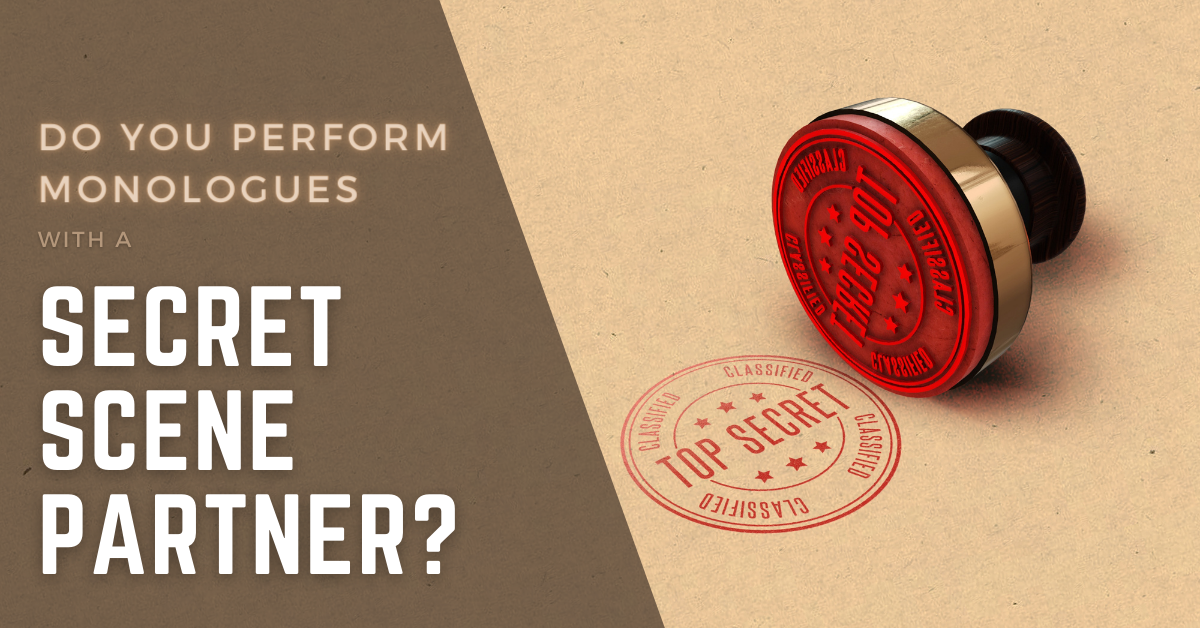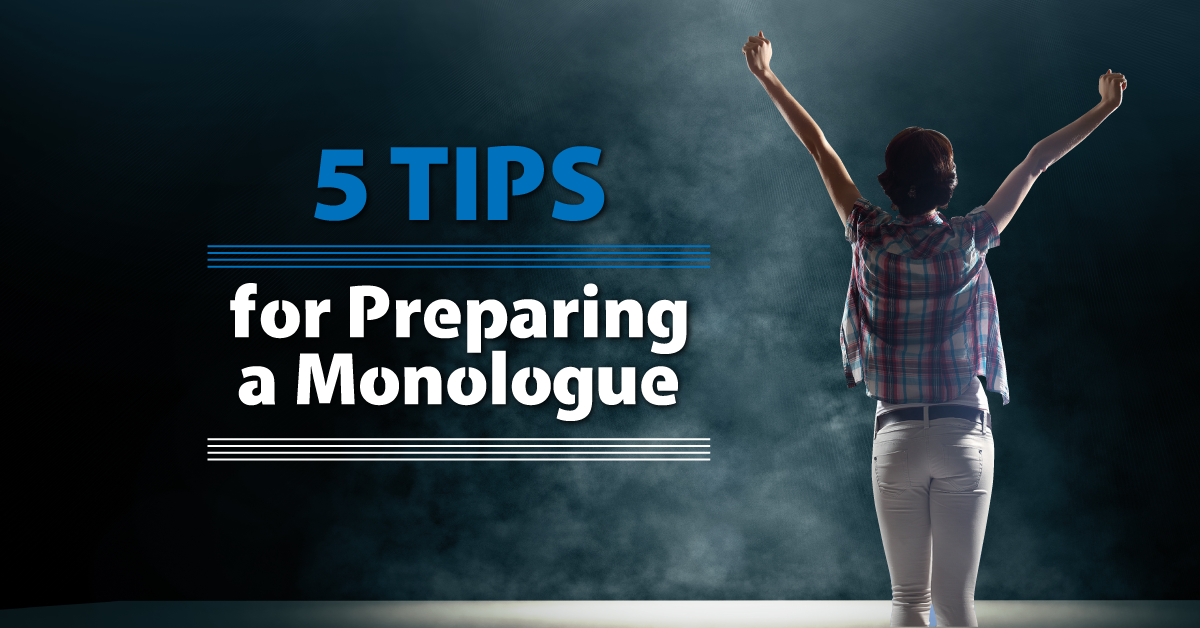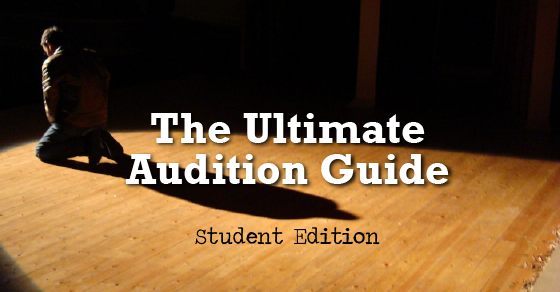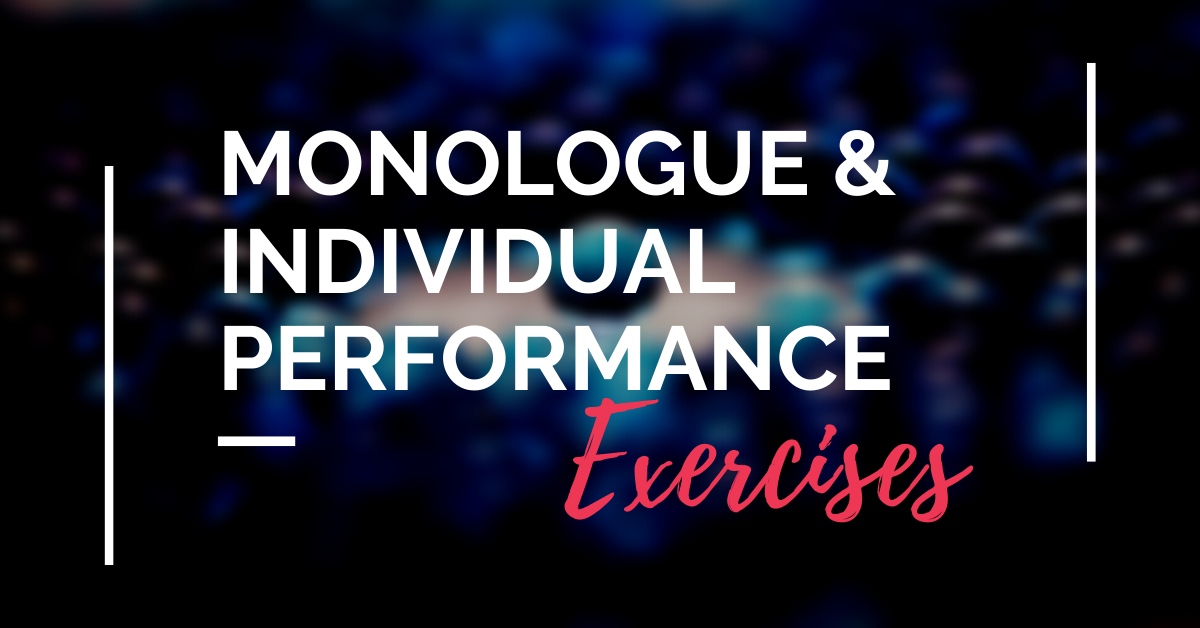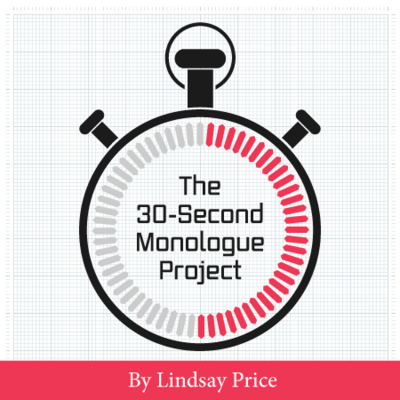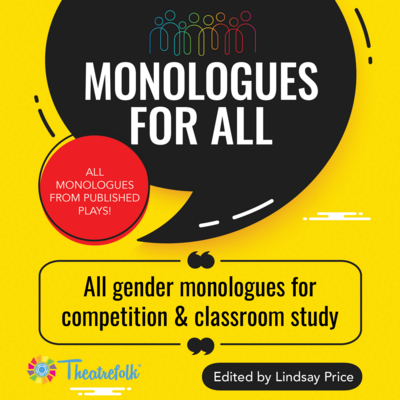A squirt gun would never be mistaken for a real gun, right? Dive into the thought-provoking world of Water. Gun. Argument and challenge what we choose to believe. A thought provoking and powerful piece in a docu-theatre style.
Do You Perform Monologues with a Secret Scene Partner?
The stage can be a lonely place when you’re performing a monologue. It’s just you. Well, you and your wits. And your anxieties. Maybe your fears, too. Sure there’s an audience, or maybe a stern-looking judge, or a roomful of fellow competitors. But if something goes wrong, or you need someone to play off of, you’re stuck with your aforementioned wits.
I’m one of those actors who likes acting with other actors. So when I perform monologues I always smuggle an SSP with me. What’s an SSP? It’s my Secret Scene Partner, of course!
I think that the most important question to ask yourself when preparing a monologue is this: Who are you speaking to?
So many times, I see students speaking their monologues to a generic “Nameless Faceless Void.” This will never be the best acting choice. The best acting choice is always the most specific acting choice.
Here’s how to create your very own SSP.
Physical
Is your SSP…
- Standing? Sitting?
- Moving? Still?
- Taller or shorter than you?
- Male? Female? Human? Animal? Alien?
- Pointing a gun at you?
- Putting gum in your hair?
- On fire? Drowning? Walking on a tightrope? Putting their head in a lion’s mouth? Drawing mustaches on portraits in the museum?
Emotional/Psychological
How is your SSP responding to your monologue? Are they…
- Listening attentively?
- Mocking you?
- Ignoring you? Deaf?
- Talking overtop everything you say?
- Crying?
- Laughing at your serious monologue?
- Crying at your funny monologue?
Actor-y Questions
- What do you want from your SSP? Do you get it?
- What does your SSP want from you? Do they get it?
- What is your SSP’s journey during your monologue?
Once you’ve sketched out your SSP, try your monologue again.
Then, change your choices and try the monologue again.
Try a variety of SSP scenarios. Think outside the box. Try SSPs that have nothing to do with the play. Try SSPs that you think are completely wrong for the play. Avoid safe choices, the ones that are easy on your character. Choose the one that challenges your character the most; this will always be your most interesting choice as an actor.
Related Articles
The 30-Second Monologue Project
by Lindsay Price
Give students the confidence, skills and tools they need to master the monologue with The 30-Second Monologue Project. This four-lesson unit guides students from the first moment to a successful performance.
Monologues for All
by Lindsay Price
Many monologue books have monologues with only male- or female-identified characters. This resource allows students to infer the identity of the character.
